Geist: Understanding and Repairing Steering Wheel Leather
by Reece @ DISteering wheel leather is different from seat, door-panel, and dashboard leather. Each has a specific function and is produced to different specifications.
Let us briefly compare the properties of each.
Seat leather is typically referred to as ‘full-grain’ leather by tanners, owing to its robust and flexible grain. This type of leather retains the natural strength and elasticity of the grain, occasionally featuring varying degrees of coating with coloured pigments and a transparent protective layer. Without this robust layer of dense fibre bundles, the leather would undergo deformation and lose its original shape. Frequently, it undergoes embossing to create a pronounced grain pattern, and in, some cases, perforations are added to enhance sitting comfort. Adequate air circulation through the seat surface is crucial; otherwise, the accumulation of sweat and moisture can compromise the overall comfort of sitting.
Dashboard leather is frequently subjected to a distinct tanning process, specifically designed to minimize the impact of sunlight and moisture. To elaborate on the term “pre-shrunk,” it involves adjusting the leather’s temperature threshold for shrinkage during tanning. Different leathers exhibit varying degrees of sensitivity to, temperature-induced shrinkage. Given that dashboards can become exceedingly hot in sunny environments, pre-shrinking the leather is a precautionary measure to prevent undesirable alterations in size.
In contemporary automobile interiors, door panel leather typically belongs to the category known as ‘split leather.’ The hide is divided, with the top grain layer reserved for seating and load-bearing areas that need to resist stretching. The lower split is coated with colored pigments and embossed with a grain-layer pattern, making it ideal for door panels that aren’t subjected to sitting or stretching. Now, consider the leather used for steering wheels. It faces the challenge of enduring all the, substances our hands and fingers come into contact with, including fatty, sticky, tasty, salty, sweet, smelly, wet, and dry elements, along with accessories like rings. Notably, insect repellent and medicinal creams pose particular challenges.
To address these issues, the surface of steering wheel leather is coated with the most swell-resistant material among all the leathers in a car. Swelling is a concern, for tanners as solvents in insect repellents and fats in hand creams can cause the clear top coat of leather to swell, resulting in a rubbery, sticky, and soft texture. A swollen top coat allows sweat and food fats to penetrate, forming a destructive combination. The good news is that preventative measures can be taken to avoid such issues, and if damage does occur, repairs are possible
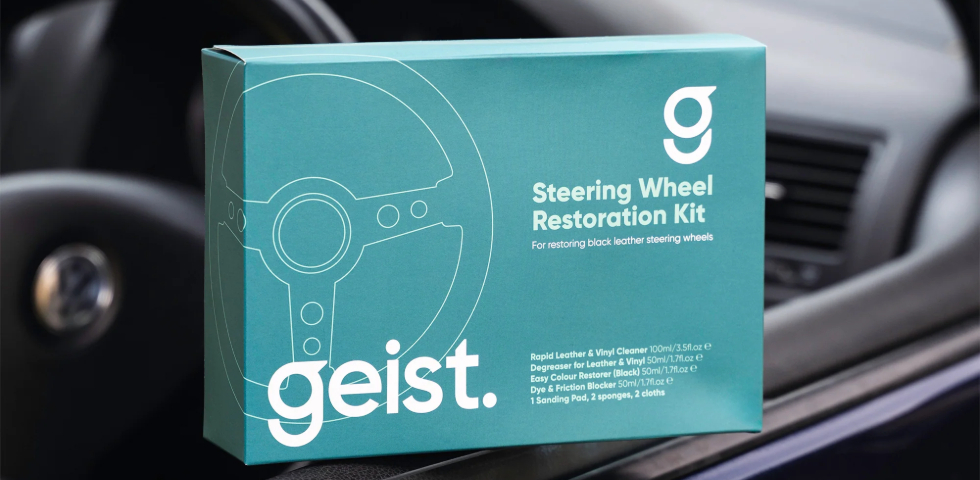
Geist Steering Wheel Kit has been developed by technicians in Germany to make steering wheel repair safe and easy. Follow our instructions shown on the product packaging but below we explain the qualities of the main products included within the kit.
Removing dirt and hand grease, sweat and chemical residues that have penetrated the leather surface.
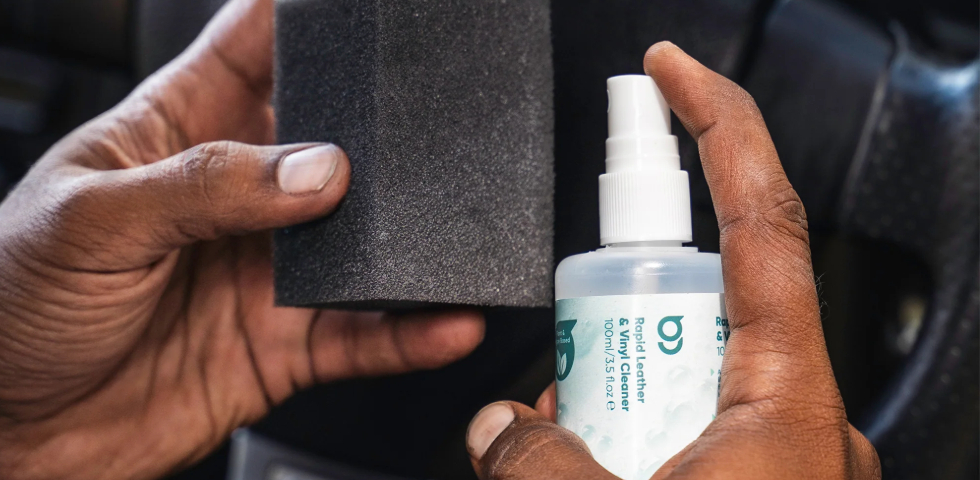
Use Geist. Rapid Cleaner followed by Geist. Degreaser.
A new steering wheel covered in leather is almost always matt. For years aggressive solvents have been used such as acetone or others, which degrease well but unfortunately, have negative side effects. They also dissolve and remove the healthy matt top coating of the leather and can dry out the leather structure which can lead to cracking and a dry rough surface.
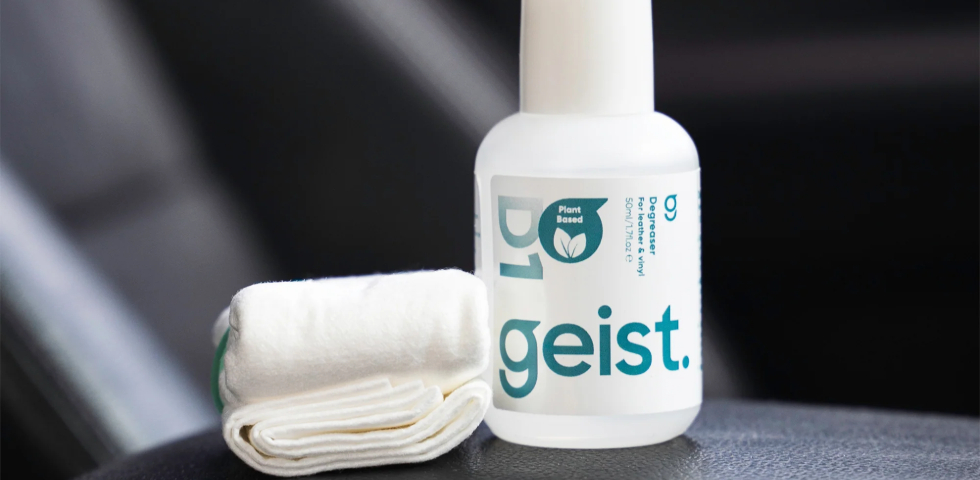
Geist. Degreaser is a 100% plant-based solvent that carries no health warning. It removes fatty soiling and water-soluble soiling such as sugars and salts without drying out or damaging the leather or its surface coatings. The healthy matt original coating is not damaged by the Degreaser. The protective coating given by the manufacturer remains intact even after being thoroughly cleaned.
It has a slightly sweet natural smell that quickly evaporates and is safe to use on natural and synthetic leather steering wheels.Removing many miles of sweat and hand grease can now be easily done without risk to the surface.
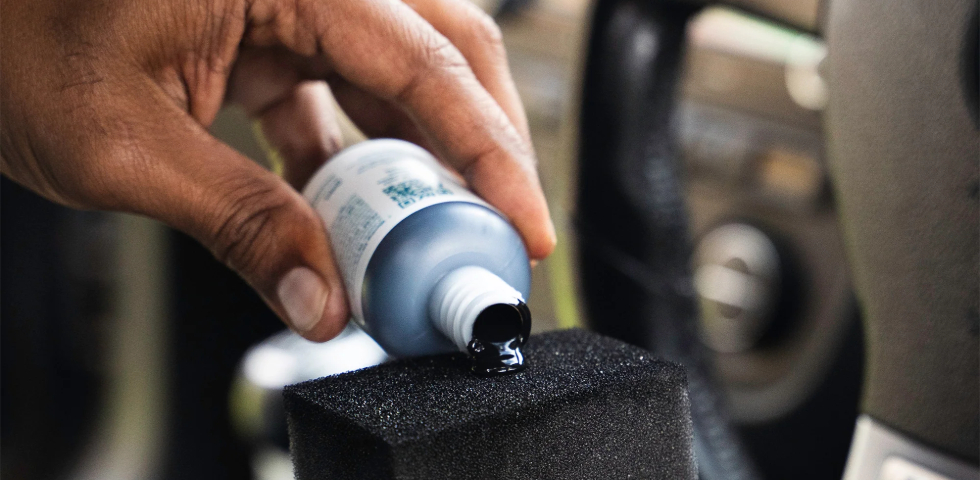
Re-colouring using Geist. Easy Colour Restorer – 1 step colour restorer. How can a one-step leather paint not rub off with a moist cloth?
We have formulated a self-crosslinking colour restorer that does not rub off once fully cured. Even with a moist cloth. The Easy Colour Restorer is solvent free and shows exceptional adhesion even on heavily used surfaces. It fills and evens out small scratches and scuffs. It makes recolouring easy and risk-free.
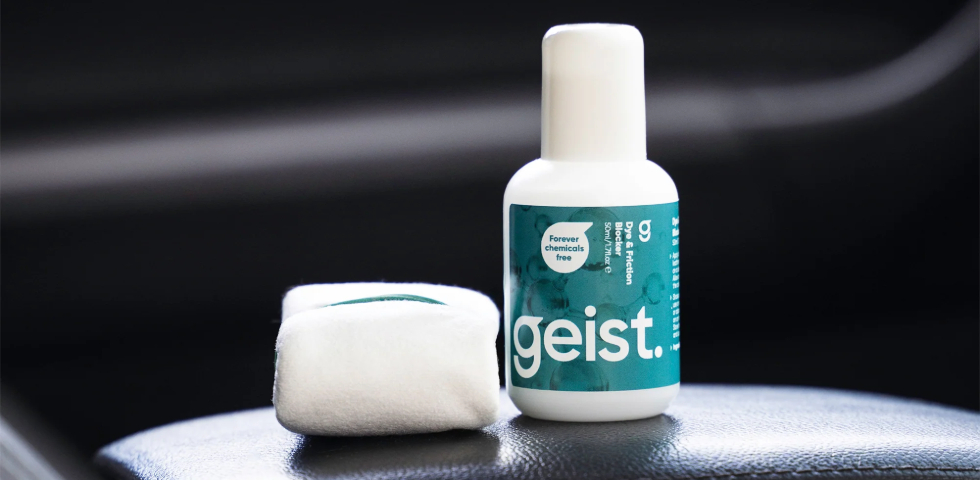
Added protection after colouring using Geist. Blocker. What is a leather surface blocker for?
Like brand new surfaces, recoloured steering wheels should be protected from hand sweat, grease and everyday fatty, oily stuff we come in contact with. It can reduce scratching and friction damage.
Free of forever chemicals, ceramic, and nano particles it offers a high level of protection to leathers that are frequently handled and rubbed. In particular, entry areas and steering wheels should be protected with Geist. Blocker.
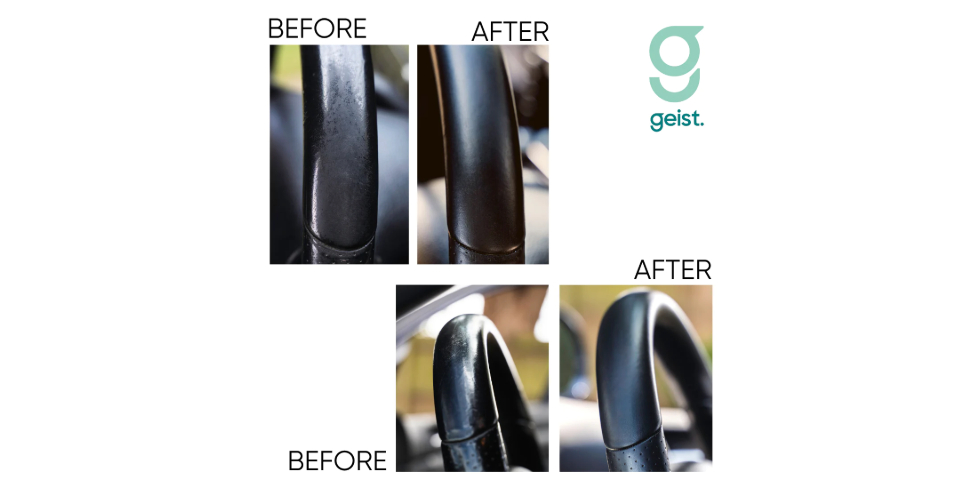








No comments yet. Be the first!